Puerto Vallarta: The Road to El Tuito
A lazy attempt to find some raicilla
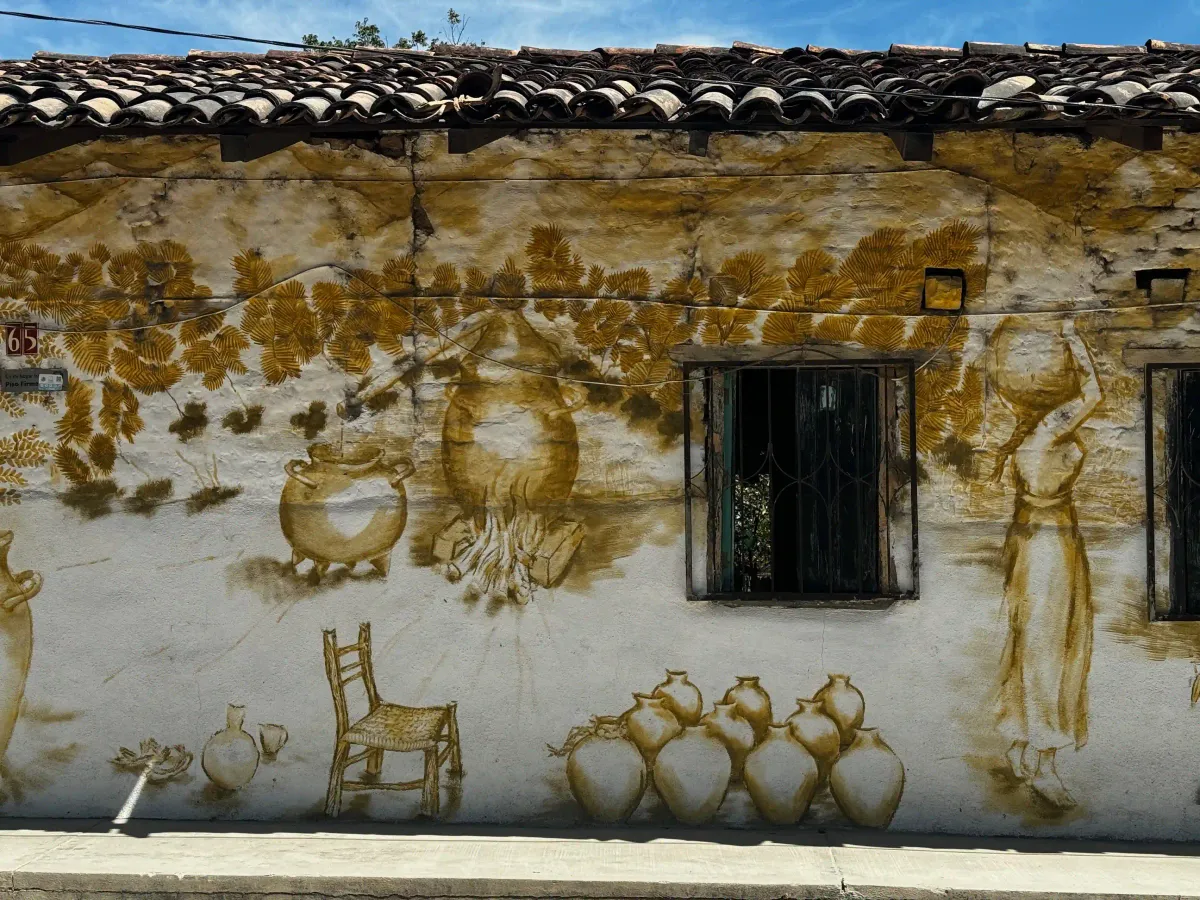
I was at the corner of Aguacate and Basilio Badillo in Zona Romantica, cluelessly walking around looking for signs. Eventually, a man approached me. "¿adonde vas?" he asked. "El Tuito," I responded. He nodded in agreement - a good sign, I assumed. After a few minutes, more people crowded around the same corner, some holding shopping bags and others looking like they were heading to work - another good sign.
Over the years, I’ve started to enjoy bus rides more. They can be particularly entertaining in places where it's the only form of intercity transport, like Central and South America. I like the rougher edges of the experience, especially when traveling to smaller, secondary cities.
Travel is mostly frictionless these days, not requiring much thought or effort. A few taps and swipes, and you're there, comfortably in your airspace-y Airbnb. On the other hand, bus routes and timetables feel like earned knowledge solely gained from experience. The malleable imprecision of it all feels fun.
The ride out of Puerto Vallarta is a beautiful and fascinating ride. For the first few miles, the road is more or less along the water, passing small shacks selling food, juices, and other wares. Intermixed is a staggering amount of construction, all private enclaves, of course - Casa Azul, Villa del Sur, The Reef - you get the idea.
For a moment, I settled into a trance, watching pelicans dive into the blue water, the gentle surf break against the sand, and workers paving paradise. But any contemplative thoughts were quickly erased by a vicious pothole that jolted me back to reality, ensuring I felt each of my 32 years. How old is this bus, anyway?
Eventually, the bus turns and starts its slow, steady ascent into the mountains.
A few days prior, I met a man named Rigo at Bill’s, a bar in the Versalles neighborhood of Puerto Vallarta. On its surface, Bill's breaks one of the first rules of finding a good restaurant or bar on the road - if it's named after a person, make sure the name fits. It's not a hard and fast rule, of course, but a guideline that should make you think twice about going to the likes of Mike's Margarita Bar.
But defying the odds, it was a good local watering hole. It had a dark, hazy interior filled with wooden tables, TVs, a jukebox, and some pool tables (Billiards --> Bill's, ostensibly?). It's the type of place where you order a beer, and maybe a shot.
While we were setting up for a game of pool, Rigo asked if he could join and even up the teams. While we got to talking, I nudged the conversation towards raicilla, an agave distillate similar to tequila or mezcal, hoping he might have a suggestion on where to find some good stuff.
Raicilla is still a little hard to find. Until recently, similar to mezcal, it was thought of as a hard-drinking moonshine that'll get you ripped if you're not careful. But also like mezcal, it's gained more appreciation and popularity in the last few years as an artifact of Jalisco's culture and history. Now, you can find it in some restaurants and even at some liquor stores in the U.S.
At the mention of raicilla, Rigo's eyes lit up, and he started telling me about his town, El Tuito. It's up in the mountains, about an hour and a half south of Puerto Vallarta. He said if you're looking for raicilla, that's the place to go. Many of the makers, or raicilleros, are in and around El Tuito, so you should be able to find some.
That was about all I needed to hear.
The bus drops you off at the center of El Tuito, next to Plaza de Armas, a big town square filled with greenery and surrounded by shops and restaurants.
El Tuito felt like a laidback, sleepy town. People were moving slowly, attempting to avoid the harsh midday sun. I passed by two old men sitting in plastic chairs on the shaded sidewalk, jawing away like old men do. They seemed distrustful of me; their gaze lingered too long.
El Tuito is a small city, so it didn't take long to walk, maybe two hours. It's a quaint, charming city surrounded by small peaks and forests. The most remarkable thing I found were these murals depicting landscapes full of agaves, raicilla, and raicilleros honing their craft.
I was at the corner of Aguacate and Basilio Badillo in Zona Romantica, cluelessly walking around looking for signs. Eventually, a man approached me. "¿adonde vas?" he asked. "El Tuito," I responded. He nodded in agreement - a good sign, I assumed. After a few minutes, more people crowded around the same corner, some holding shopping bags and others looking like they were heading to work - another good sign.
Over the years, I’ve started to enjoy bus rides more. They can be particularly entertaining in places where it's the only form of intercity transport, like Central and South America. I like the rougher edges of the experience, especially when traveling to smaller, secondary cities.
Travel is mostly frictionless these days, not requiring much thought or effort. A few taps and swipes, and you're there, comfortably in your airspace-y Airbnb. On the other hand, bus routes and timetables feel like earned knowledge solely gained from experience. The malleable imprecision of it all feels fun.
The ride out of Puerto Vallarta is a beautiful and fascinating ride. For the first few miles, the road is more or less along the water, passing small shacks selling food, juices, and other wares. Intermixed is a staggering amount of construction, all private enclaves, of course - Casa Azul, Villa del Sur, The Reef - you get the idea.
For a moment, I settled into a trance, watching pelicans dive into the blue water, the gentle surf break against the sand, and workers paving paradise. But any contemplative thoughts were quickly erased by a vicious pothole that jolted me back to reality, ensuring I felt each of my 32 years. How old is this bus, anyway?
Eventually, the bus turns and starts its slow, steady ascent into the mountains.
A few days prior, I met a man named Rigo at Bill’s, a bar in the Versalles neighborhood of Puerto Vallarta. On its surface, Bill's breaks one of the first rules of finding a good restaurant or bar on the road - if it's named after a person, make sure the name fits. It's not a hard and fast rule, of course, but a guideline that should make you think twice about going to the likes of Mike's Margarita Bar.
But defying the odds, it was a good local watering hole. It had a dark, hazy interior filled with wooden tables, TVs, a jukebox, and some pool tables (Billiards --> Bill's, ostensibly?). It's the type of place where you order a beer, and maybe a shot.
While we were setting up for a game of pool, Rigo asked if he could join and even up the teams. While we got to talking, I nudged the conversation towards raicilla, an agave distillate similar to tequila or mezcal, hoping he might have a suggestion on where to find some good stuff.
Raicilla is still a little hard to find. Until recently, similar to mezcal, it was thought of as a hard-drinking moonshine that'll get you ripped if you're not careful. But also like mezcal, it's gained more appreciation and popularity in the last few years as an artifact of Jalisco's culture and history. Now, you can find it in some restaurants and even at some liquor stores in the U.S.
At the mention of raicilla, Rigo's eyes lit up, and he started telling me about his town, El Tuito. It's up in the mountains, about an hour and a half south of Puerto Vallarta. He said if you're looking for raicilla, that's the place to go. Many of the makers, or raicilleros, are in and around El Tuito, so you should be able to find some.
That was about all I needed to hear.
The bus drops you off at the center of El Tuito, next to Plaza de Armas, a big town square filled with greenery and surrounded by shops and restaurants.
El Tuito felt like a laidback, sleepy town. People were moving slowly, attempting to avoid the harsh midday sun. I passed by two old men sitting in plastic chairs on the shaded sidewalk, jawing away like old men do. They seemed distrustful of me; their gaze lingered too long.
El Tuito is a small city, so it didn't take long to walk, maybe two hours. It's a quaint, charming city surrounded by small peaks and forests. The most remarkable thing I found were these murals depicting landscapes full of agaves, raicilla, and raicilleros honing their craft.
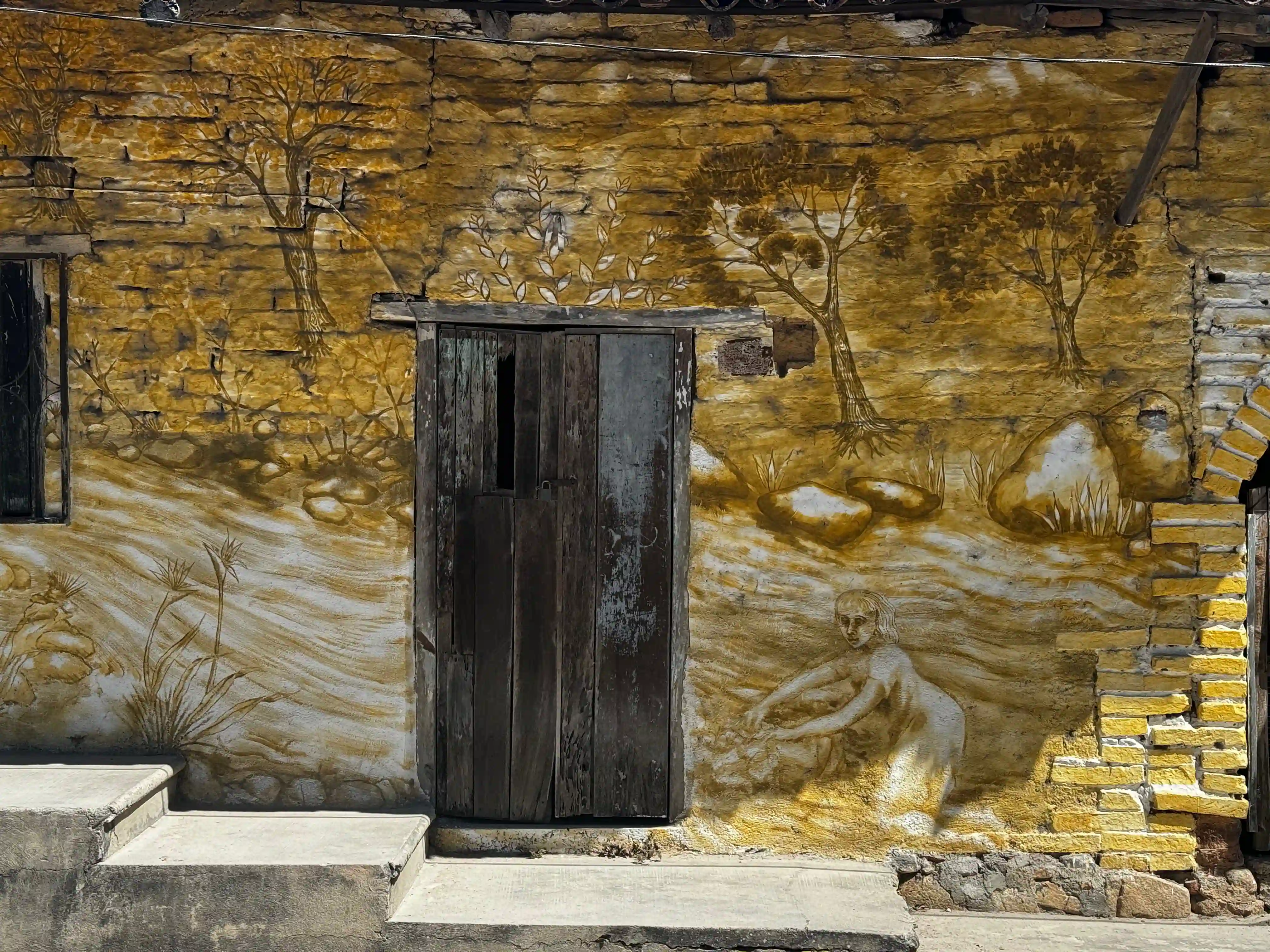
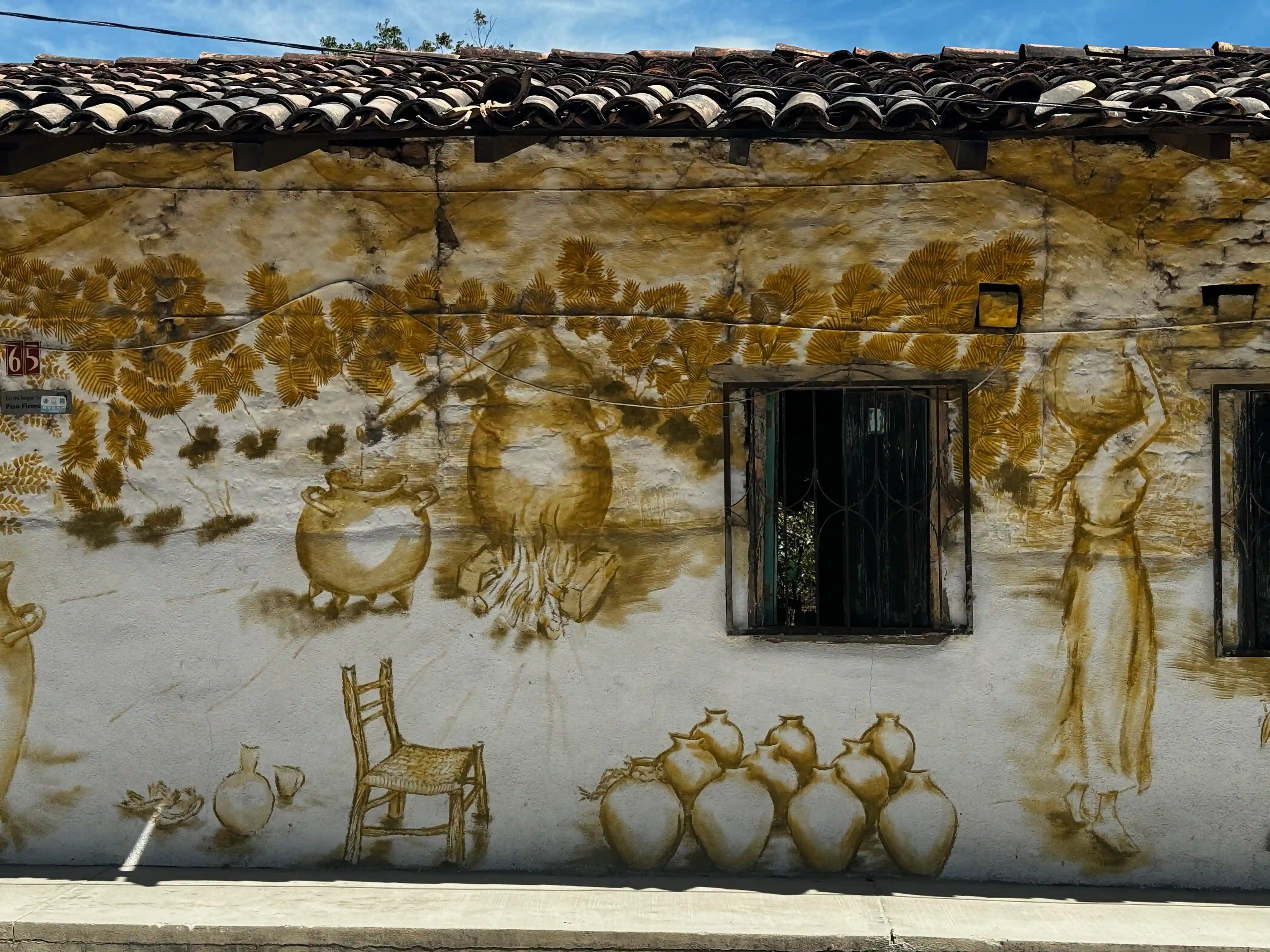
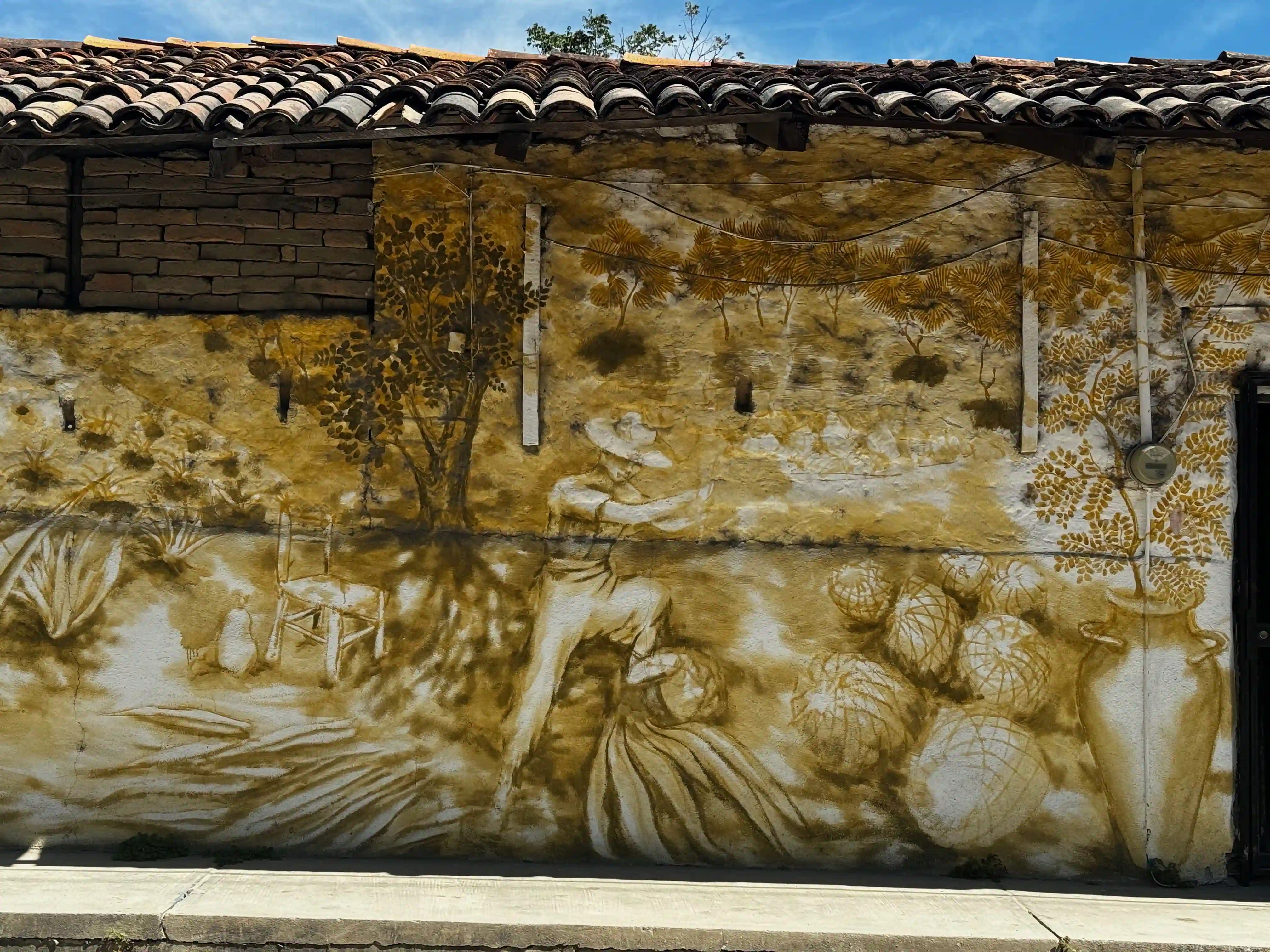
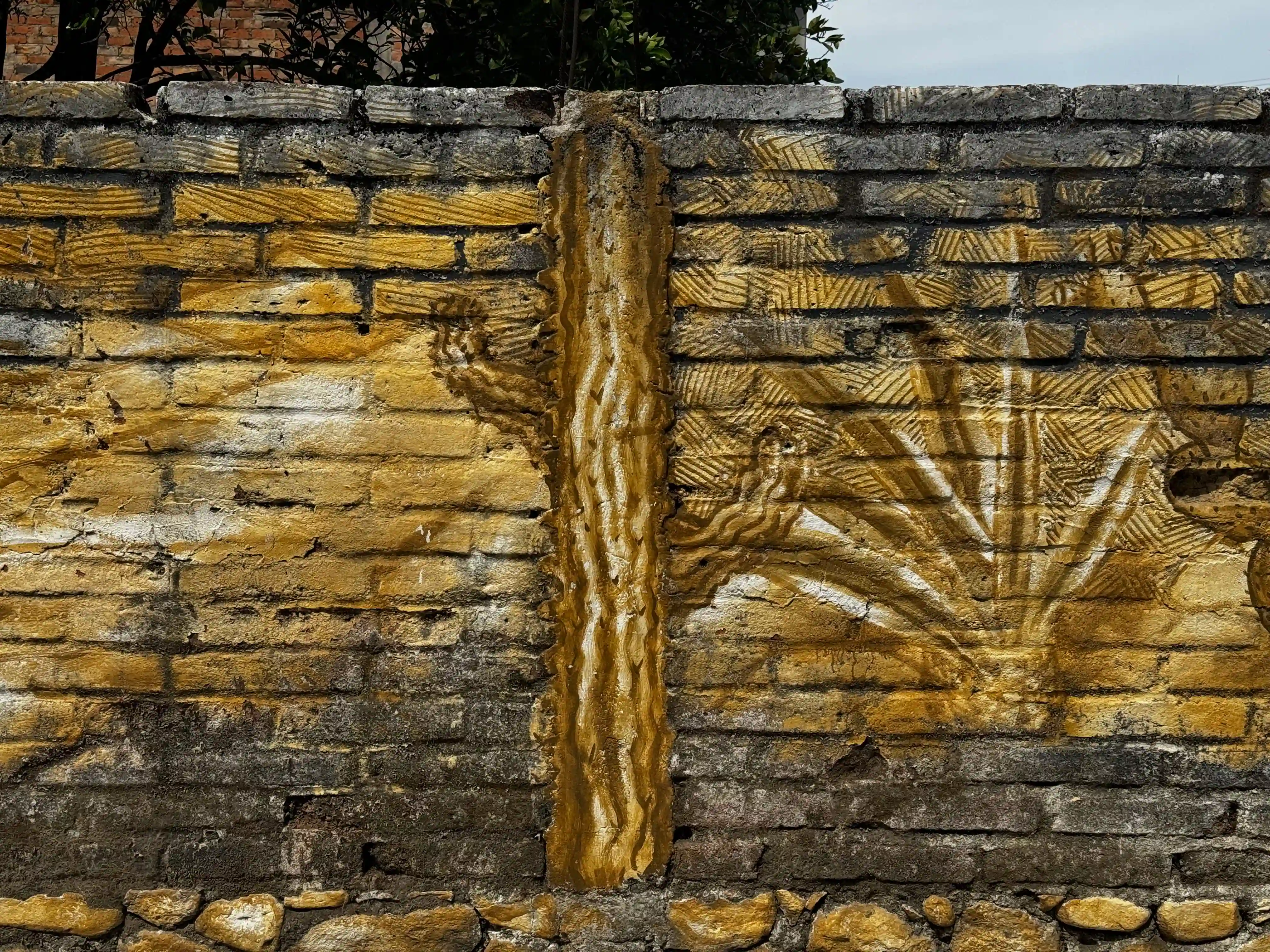
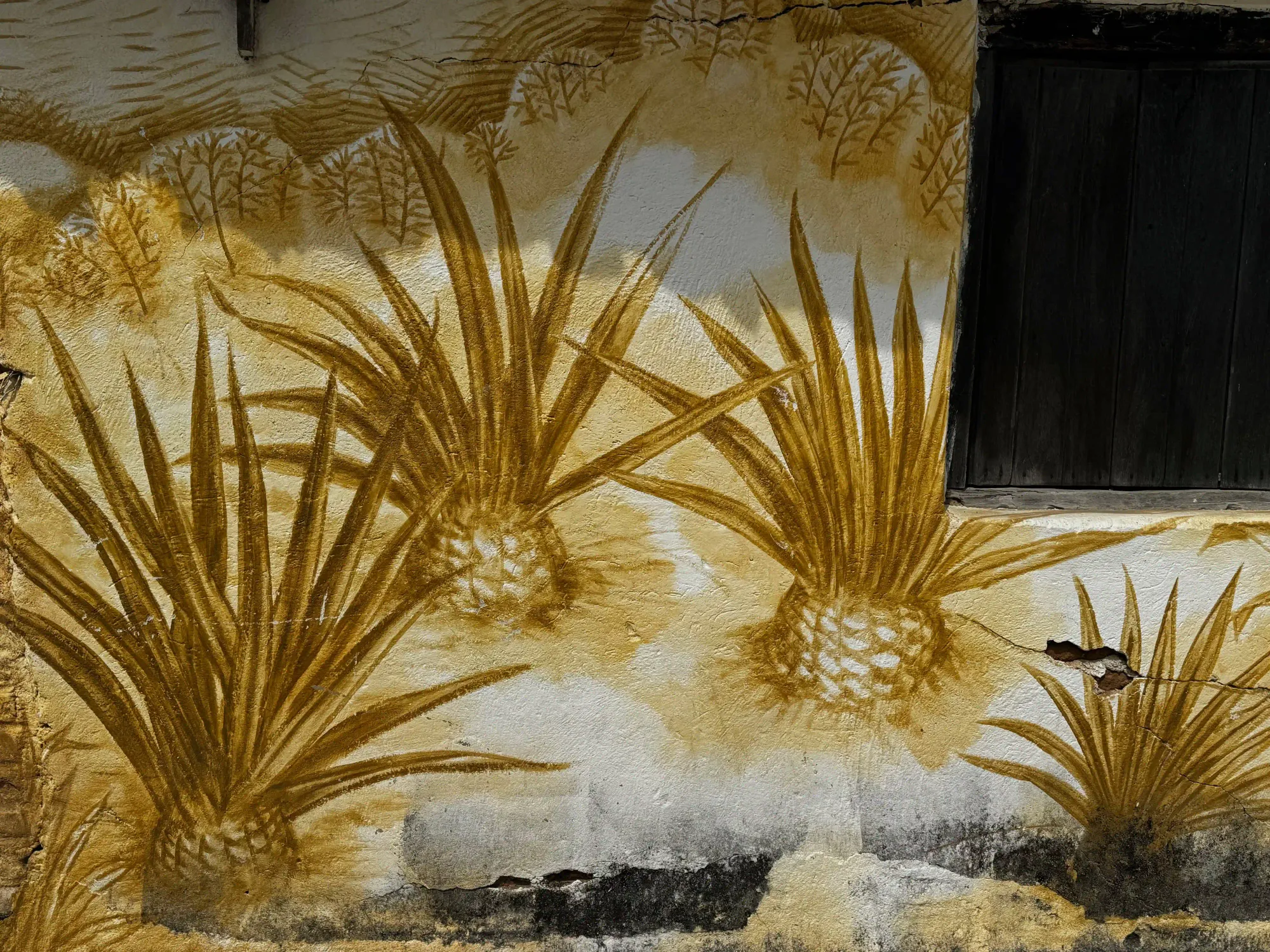
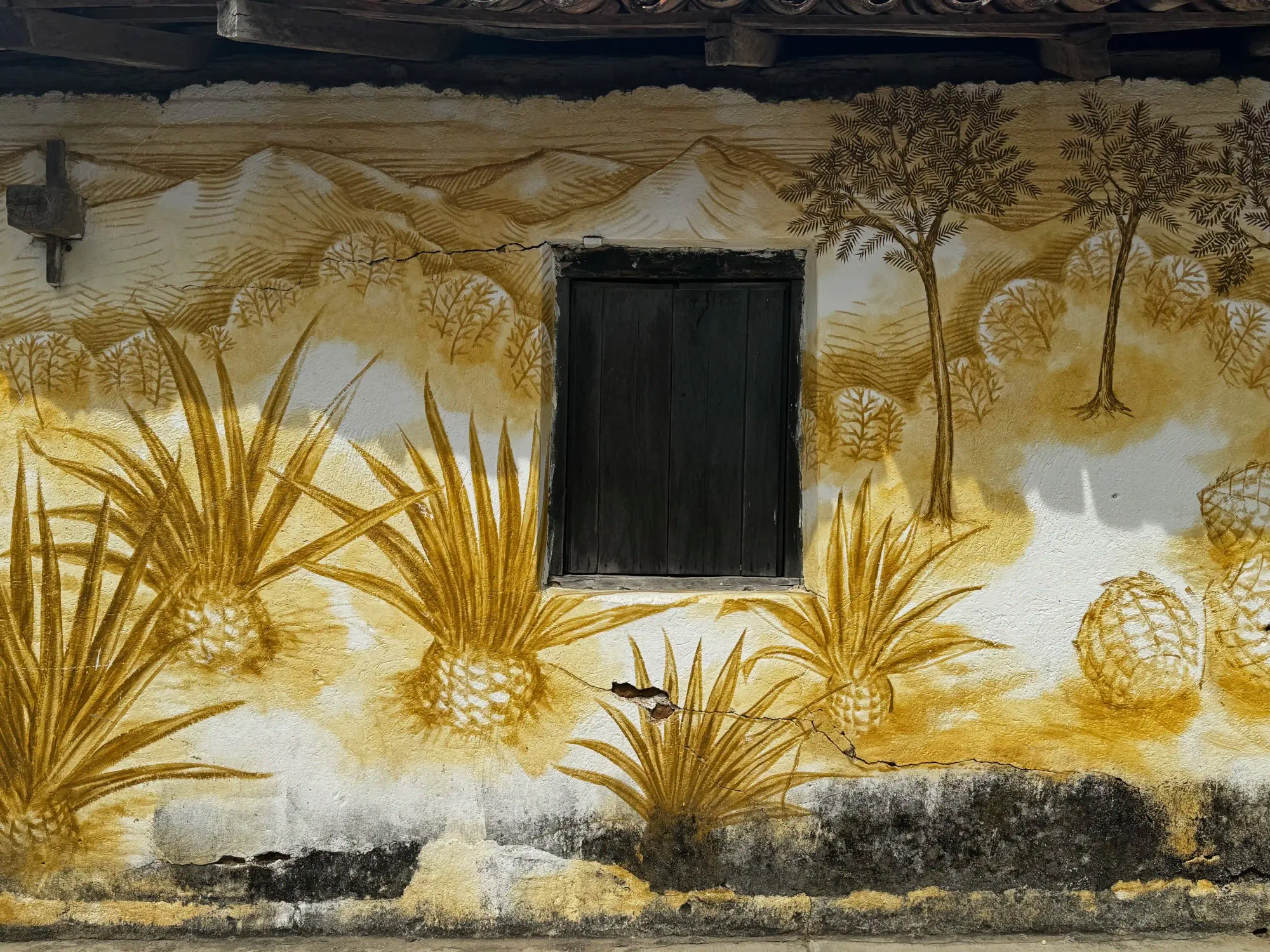
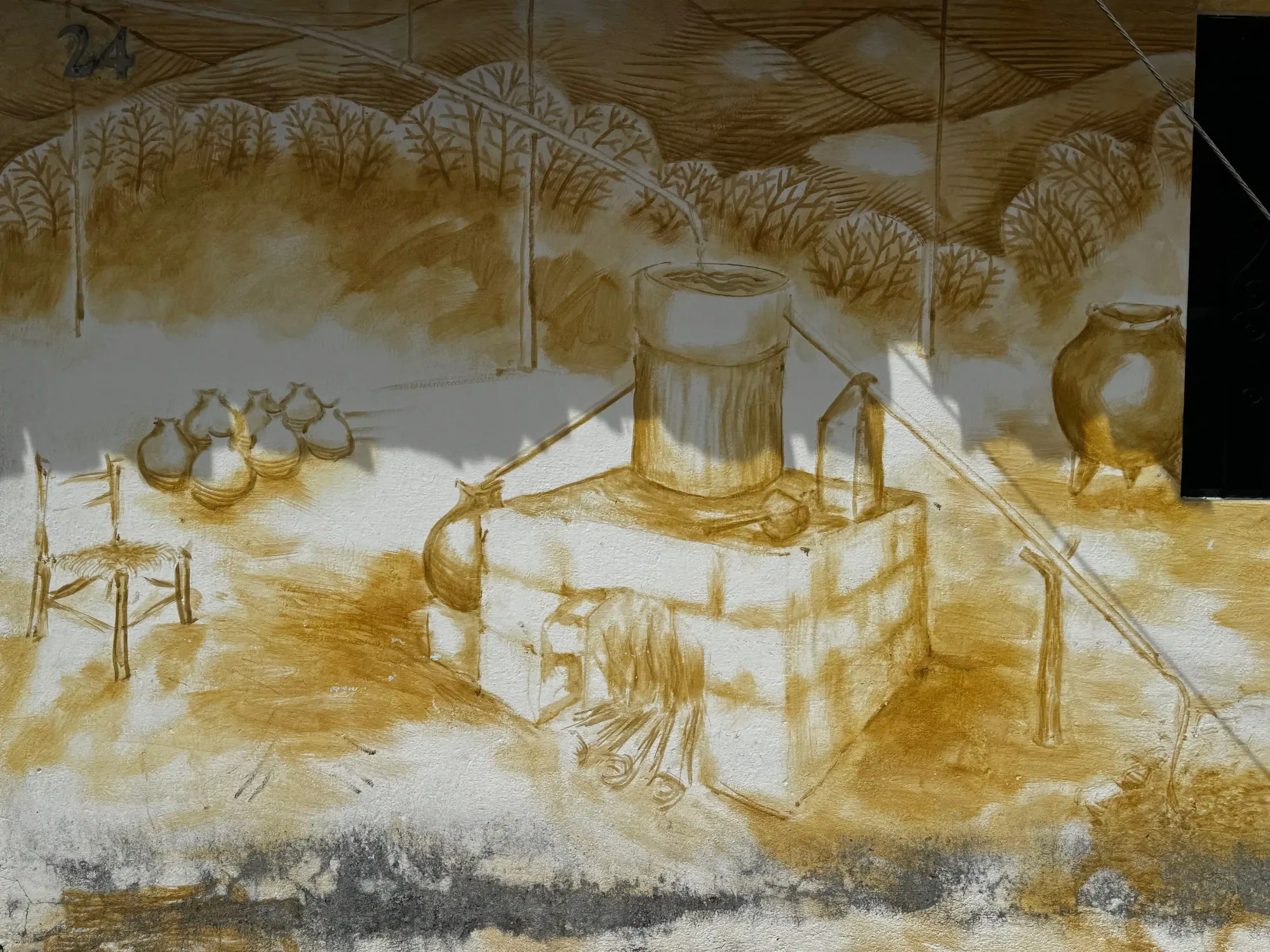
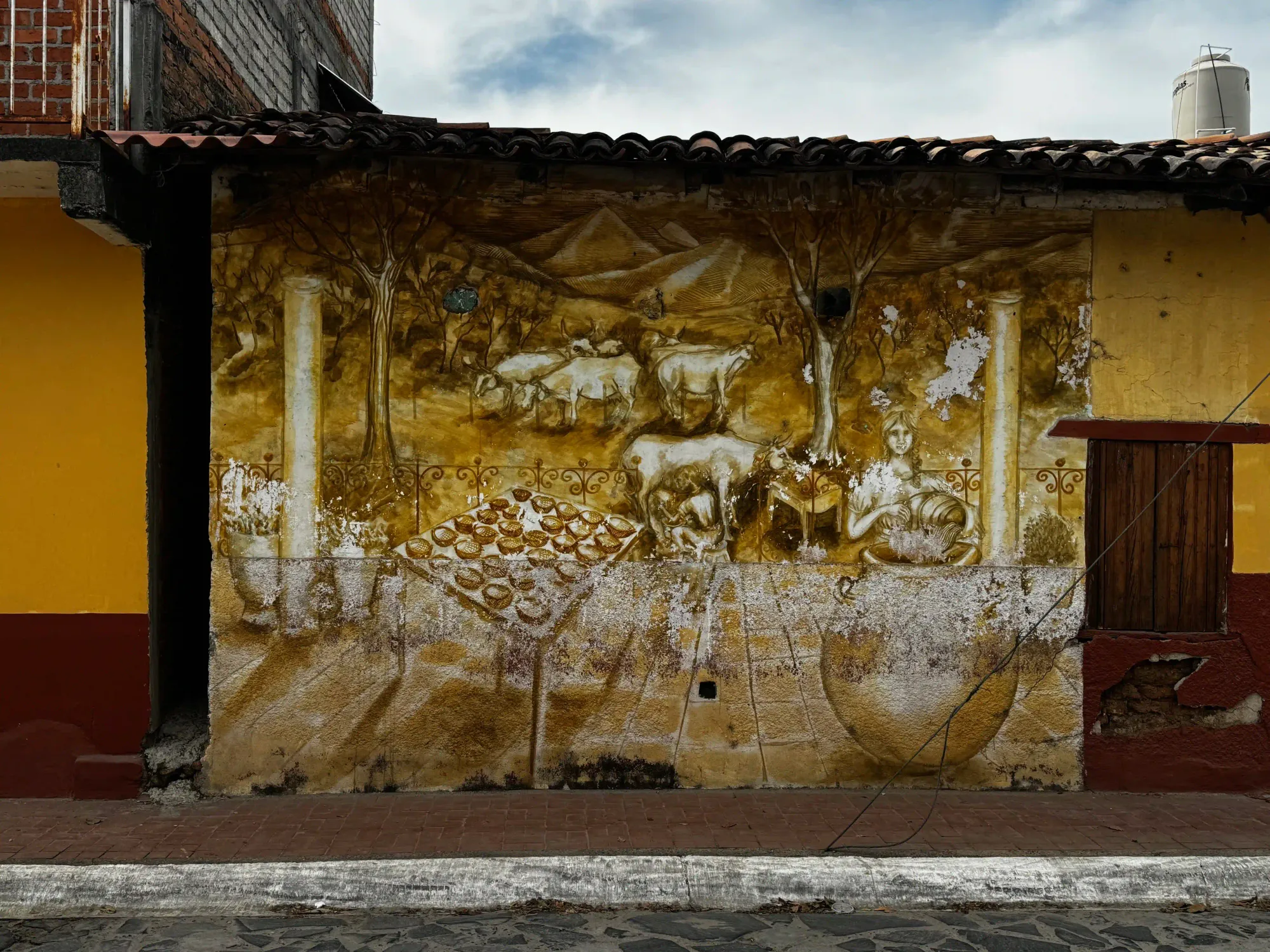
The heat wore me down, and I was peckish. I found El Patio de Mario, a small restaurant alongside Plaza de Armas.
At this point, I started to feel disappointed. Not in El Tuito, but myself. When I was planning a trip down to Puerto Vallarta/Jalisco, my goal was to meet with some raicilla producers or experts. I wanted to talk about all things agave distillates, see some agaves, and maybe visit a taberna or two. In the weeks leading up to the trip, I was scrambling, trying to find someone interesting to talk to. Though I eventually had a lead, it ended up falling through.
So when I arrived in Puerto Vallarta, I had nothing planned for ten days in the area, which, in some ways, felt like a waste of a trip.
Part of me had hoped I'd find something in El Tuito. Maybe I'd find some agave paradise where raicilla was flowing from the taps or stumble on some magical, agave-laden story. No, it was all rather ordinary. But I had nobody and nothing to blame, just my lazy preparation in the weeks leading up. Which is always the most brutal reality to accept.
But why am I wasting time being bummed out? I'm sitting here, eating birria and drinking an ice-cold beer at a perfectly quaint mountain town in Mexico. Life is objectively good, so what am I complaining about? Plus, at the end of the day, I'm just floating on a small rock in space, a fact my ego doesn't want me to remember.
So I took a sip of my Pacifico and tried to snap out of my funk so that I could enjoy the day.
As I was getting ready to leave El Patio de Mario, I noticed a man doing prep work at the front of the restaurant. He was giving big Mario energy, so I figured I'd ask him if he knew where I could find some raicilla. Instinctually, he pointed to the shelf behind me, revealing his own El Patio de Mario-branded bottle of raicilla.
I couldn't help but chuckle to myself.
We got to talking a bit, and from what I can gather, he makes the stuff with the help of some raicilleros and tabernas in the nearby mountains. I asked if he had any to try, and he walked over to the shelf, grabbed a big glass jug from the top shelf, and poured some into a glass. Another good rule for drinking on the road—if someone pours you something from a nondescript jug, it's probably the good stuff.
And it was.
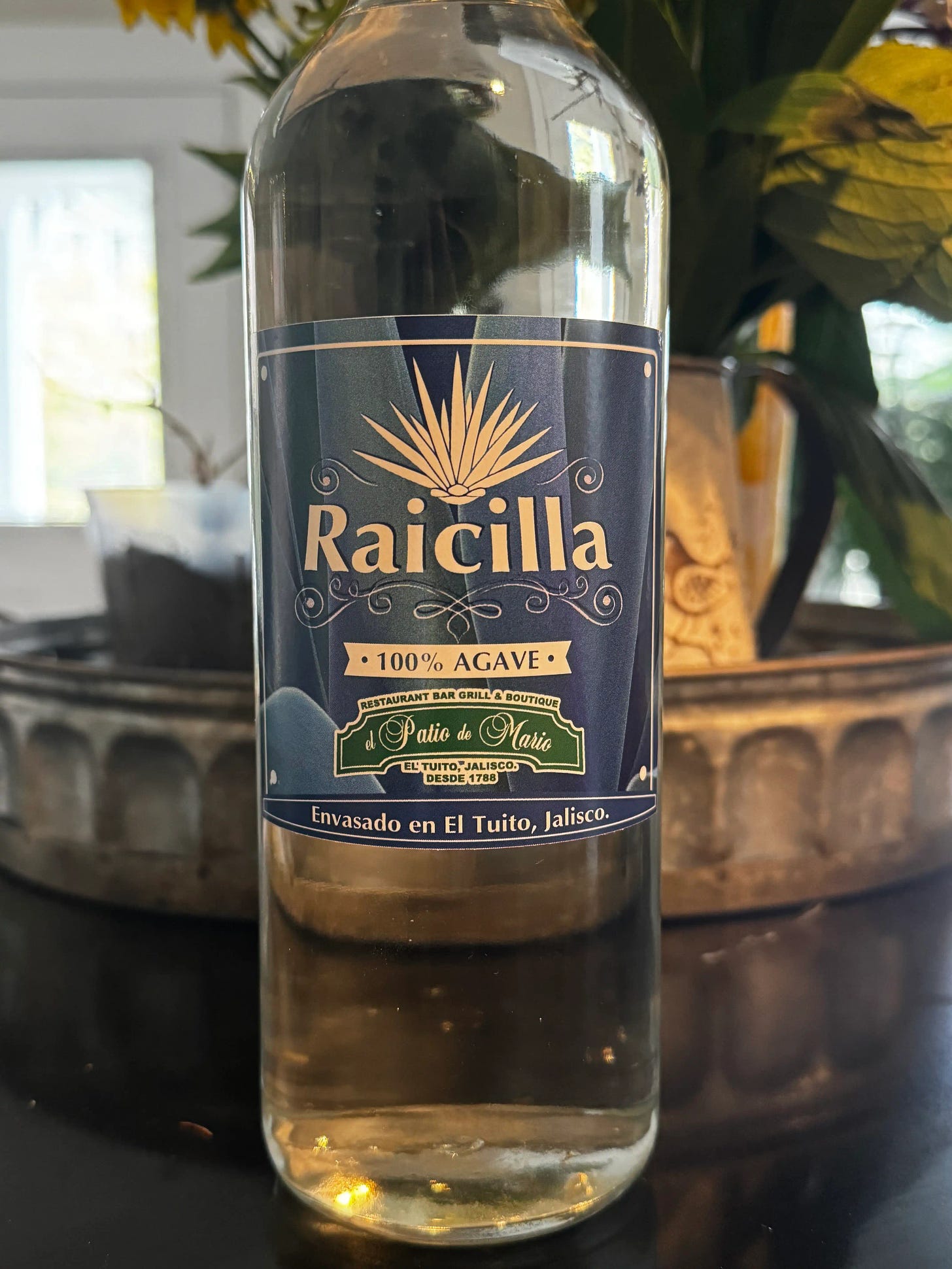
Elsewhere…
The New Wine Review is a new project from Jason Wilson of Everyday Drinking. The writing has been informative and has tons of leggy depth (yes, bad wine pun intended), so I’m excited to see where it goes.
I’ve been enjoying Chris Tharp’s Across the Steppe series about his adventures through Mongolia.
Flop rock: inside the underground floppy disk music scene
Thanks for reading.
Skylar
